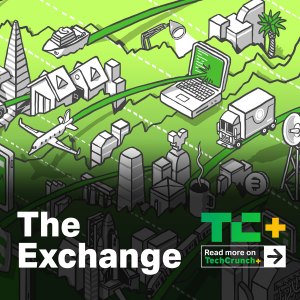What’s your BNPL startup really worth?
Is your startup more like Affirm or more like its smaller competitors? And if you are priced more like Affirm, why? Do you deserve the premium?

News that Zip, an Australian buy now, pay later (BNPL) company, intends to buy Sezzle, a U.S. company of similar ilk, caught our eye this morning. Both concerns are public in Australia, which means that the deal provides a fascinating window into the real value of this particular sort of fintech revenue.
TechCrunch has covered more BNPL startup funding rounds than I can hold straight in my head. The global fintech boom brought with it a parade of checks for startups building installment credit options under the BNPL aegis in recent quarters, meaning that our keyboards have been busy.
For example, MarketForce raised $40 million last week, Alma raised $130 million earlier this month, Ascend picked up $280 million in equity and debt capital in late January, BillEase raised $11 million in mid-January, ThankUCash raised $5.3 million for its fintech work that includes BNPL, and Lipa Later is targeting new markets for its BNPL services after raising $12 million. And that’s merely what I found with a quick scan of TechCrunch this morning.
The Exchange explores startups, markets and money.
Read it every morning on TechCrunch+ or get The Exchange newsletter every Saturday.
It is clear that venture interest in BNPL-focused startups remains incredibly active. But as The Exchange explored earlier this month, the value of some public companies in the sector has suffered. For example, the value of U.S. BNPL giant Affirm has suffered mightily in recent quarters, shedding the majority of its value.
To see a combination in the space, then, means that we’re not seeing BNPL tie-ups at market highs; we’re seeing the Zip-Sezzle deal at market ebb, instead.
 Let’s parse the deal’s terms and sort out what the public markets are saying BNPL incomes are worth. For the myriad startups chasing what they hope to be fat profits and valuable cash flows from offering installment credit, the day’s news is more than important; from a valuation perspective, it could prove existential for some.
Let’s parse the deal’s terms and sort out what the public markets are saying BNPL incomes are worth. For the myriad startups chasing what they hope to be fat profits and valuable cash flows from offering installment credit, the day’s news is more than important; from a valuation perspective, it could prove existential for some.
What’s BNPL revenue worth?
When we examined Affirm earlier in the month, we noted that its take-rate, or revenue as a percentage of gross merchandise volume, was falling over time. From a peak of 12.7% in the company’s Q4 of its fiscal 2020 to 8.1% in its most recent quarter, the second quarter of its fiscal 2022.
Zip is facing similar headwinds, with its “revenue margin” slipping from 7.1% in the back half of 2020 to 6.9% in the first half portion of 2021 to 6.7% in the last six months of last year.
BNPL companies, then, appear to be losing their ability to claim part of their aggregate transaction volume as income; this is not a surprise, given how competitive their market is proving to be. Seeing pricing pressure in busy sectors is a good thing for consumers — and marks a maturing of the product in question.
With that as our backdrop, let’s talk about the deal.







